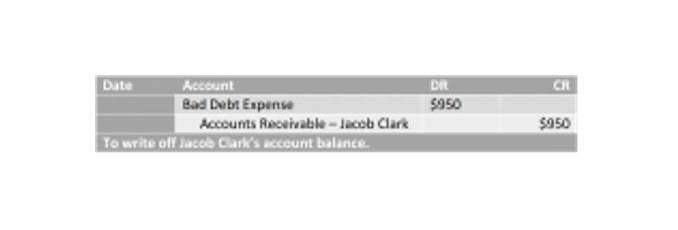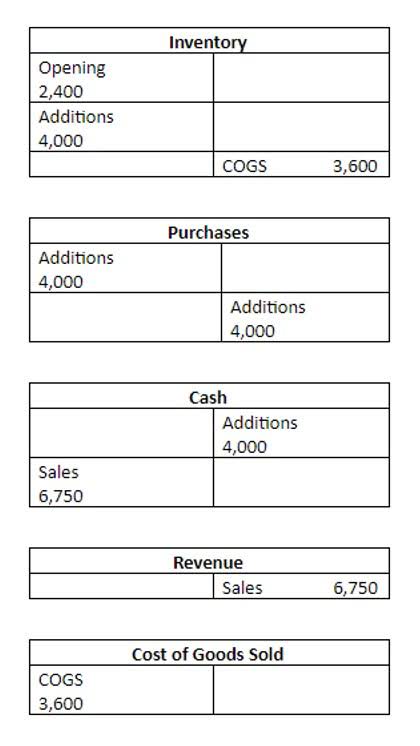R7 Casino вход на официальный сайт казиноR7 Casino вход на официальный сайт казино
Р7 казино онлайн официальный сайт и зеркало для входа на R7 Casino Чтобы забрать ключи от машины, нужно
Comunícate con nosotros para más información: +57 317 6755410

For example, if you made a sale at the end of one accounting period ending in December, you might not realize the bad debts until the beginning of March. A direct write-off often happens in a different year than when the sale was made, or in other words, the revenue was recorded by your business. Using the direct write off method, Beth would simply debit the bad debt expense account for $100 and credit the accounts receivable account for the same amount. This effectively removes the receivable and cash flow records the loss Beth incurred from the non-creditworthy customer.

Bad debt, or the inability direct write-off method to collect money owed to you, is an unfortunate reality that small business owners must occasionally deal with. You’ll need to decide how you want to record this uncollectible money in your bookkeeping practices. Kristin is a Certified Public Accountant with 15 years of experience working with small business owners in all aspects of business building.
The direct write-off method doesn’t adhere to the expense matching principle—an expense must be recognized during the same period that the revenue is brought in. As a result, the direct write-off method violates the generally accepted accounting principles (GAAP). When using this accounting method, a business will wait until a debt is deemed unable to be collected before identifying the transaction in the books as bad debt. Under the allowance method, a company needs to review their accounts receivable (unpaid invoices) and estimate what amount they won’t be able to collect. This estimated amount is then debited from the account Bad Debts Expense and credited to a contra account called Allowance for Doubtful Accounts, according to the Houston Chronicle.
Accounts receivable are recorded in the entity’s financial statements only if it is following the accrual basis accounting principle. If an entity uses a cash basis to prepare its financial statements, receivables should recognize our revenue. It is important to know accounts receivable are the current assets in the balance sheet and the increase of them on debit while decreasing of them are on credit. Explore the direct write-off method for managing bad debt, its criteria, impact on financial statements, and comparison with the allowance method.


We must create a holding account to hold the allowance so that when a customer is deemed uncollectible, we can use up part of that allowance to reduce accounts receivable. Allowance for Doubtful Accounts is a contra-asset linked to Accounts Receivable. The allowance is used the reduce the net amount of receivables that are due while leaving all the customer balances intact.
It estimates uncollectible accounts at the end of each accounting period, creating a reserve or allowance for doubtful accounts. This estimated amount is then used to reduce the total accounts receivable on the balance sheet, reflecting a more realistic view of what the company expects to collect. The direct write-off method, while straightforward in its approach, presents a significant challenge for financial analysis. This method, which involves expensing accounts receivable that are considered uncollectible directly to the income statement, bypasses the allowance for doubtful accounts.
The Allowance Method is a systematic approach to Accounts Payable Management accounting for bad debts that involves estimating the amount of uncollectible accounts receivable at the end of each accounting period. This method adheres to the matching principle, ensuring that bad debt expenses are recognized in the same period as the related sales. The estimated uncollectible amount is recorded in an allowance for doubtful accounts, a contra-asset account that offsets accounts receivable on the balance sheet. The direct Write-Off method is a point of contention in financial analysis due to its impact on the accuracy of financial statements.

The AI algorithm continuously learns through a feedback loop which, in turn, reduces false anomalies. We empower accounting teams to work more efficiently, accurately, and collaboratively, enabling them to add greater value to their organizations’ accounting processes. In Canada, financial reporting standards such as IFRS and ASPE (Accounting Standards for Private Enterprises) emphasize the matching principle, which the Direct Write-Off Method does not adhere to.

Gustavo Adolfo López Díaz
Socio Fundador y Gerente SUMMA

Gustavo Adolfo López Díaz
Socio Fundador y Gerente SUMMA
¿Necesitas una asesoría contable?
Р7 казино онлайн официальный сайт и зеркало для входа на R7 Casino Чтобы забрать ключи от машины, нужно
Как выбрать надежное онлайн-казино и не попасть в ловушку мошенников? Как распознать надежное онлайн-казино? Выбор надежного онлайн-казино —
R7 casino бонусы, промокоды Личный блог КОНТ Наслаждайтесь азартом и разнообразием игровых вариантов на вашем мобильном устройстве, не
Р7 казино онлайн официальный сайт и зеркало для входа на R7 Casino Чтобы забрать ключи от машины, нужно
Boletín
Horario de atención:
Cámara de Comercio de Pasto. Oficina 703. Pasto, Nariño.